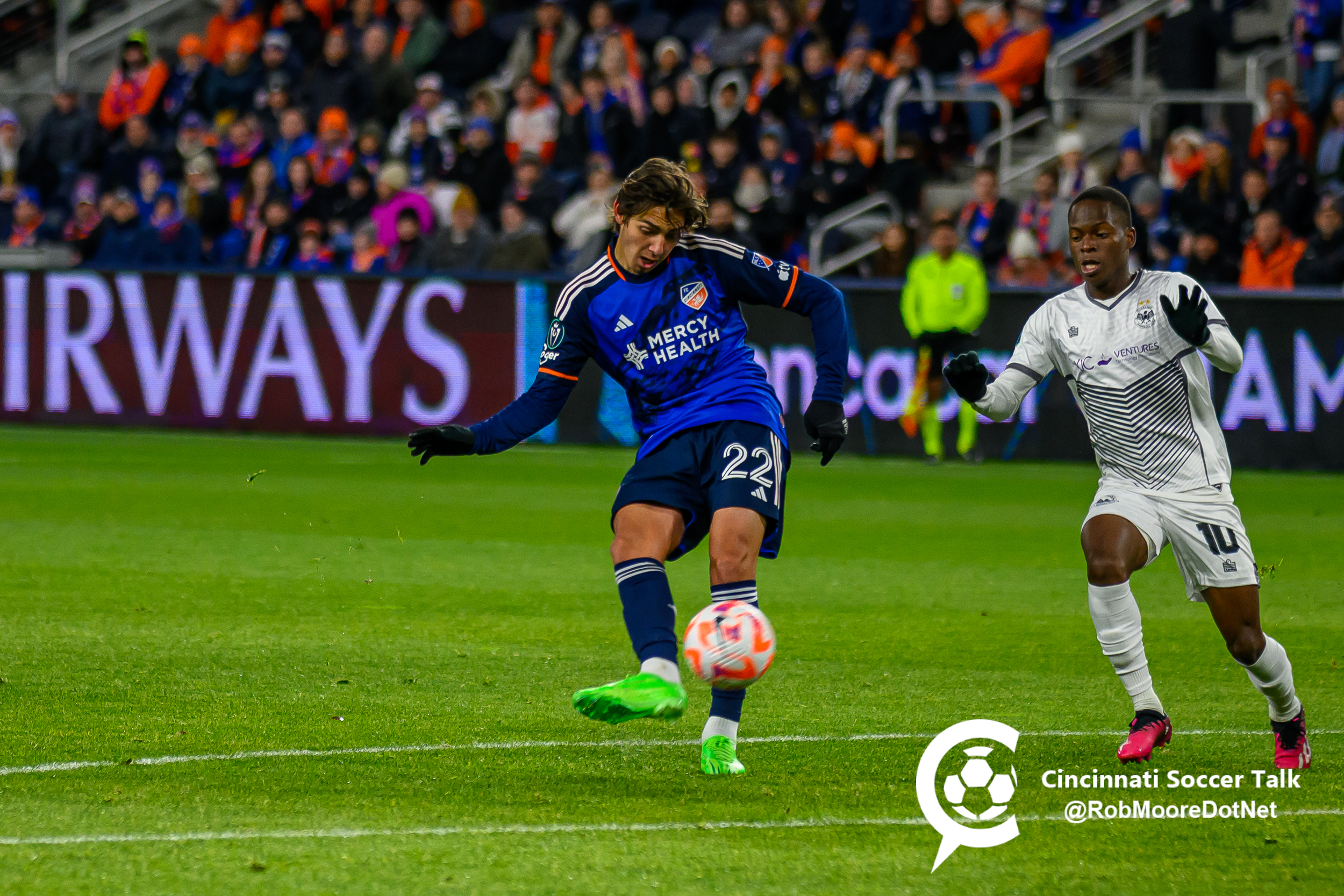When FC Cincinnati landed back in the Queen City on Sunday night it was at the end of a hellacious stretch during which the team played eight games in 23 days, spanning more than 7,600 miles as the crow flies. Despite the team’s exit from the CONCACAF Champions Cup in Monterrey, FCC overcame a heavily-rotated squad and the turf of Gillette Stadium to notch a 2-1 road win against the New England Revolution.
The first half wasn’t much to write home about, but in the second half, as he so often does, Lucho Acosta proved to be a difference maker. He dominated the game from the minute he stepped on the field, and less than ten minutes into the second half, the Orange and Blue had a two-goal lead. Though FCC conceded a sloppy goal in the 62nd minute and had to hold on through a desperate Revs attack at the end of the game, three road points to conclude a brutal start to the season sets FCC up for the rest of 2024.
FCC proved that it’s a really good team, going blow-for-blow with one of the best, if not the best, teams in the region in Monterrey. Though the Orange and Blue haven’t reached the heights of 2023 yet, it’s a good bet that the team’s best soccer is still ahead. So FCC returns to a normal training schedule without a midweek game until mid-May.
Dado’s Start
Dado Valenzuela didn’t disappoint in his first MLS start. Though I think some of the Dado hype in the FCC fanbase is getting ahead of itself, Valenzuela had a good first half, providing ball progression through both passing and on the dribble. He moved the ball into the final third of the field six times in the first half, three passing and three carrying it forward himself.
In the 27th minute, Valenzuela’s run from deep in FCC’s half of the field to just outside New England’s box was a great sign. He turned a situation where the Revs were pressing aggressively into a 5-v-4 transition situation where the Orange and Blue had the advantage all by beating his defender on the turn. Unfortunately, Valenzuela kept the ball just a bit too long, allowing an opposing center back to win a challenge. The hope is that with more minutes at this level, his decision-making will catch up to the speed of play.
I still think it’s too early to view Valenzuela as a major cog in FCC’s success in 2024. But Sunday was a good sign that he won’t be majorly out of his depth. Pat Noonan struggled to find impactful attacking options off the bench in 2023. Valenzuela looks like he could be a potential option to fill that gap in the roster.
FCC2 Looks Improved?
FCC2’s season started on Sunday as well, drawing in full-time 1-1 with Chicago Fire II at Scudamore Field at Northern Kentucky University.
To say the team’s first two seasons in MLS NextPro were bad is a bit of an understatement. FCC2 had a -17.18 expected goal differential in 2022 followed by a -20.60 xGD in 2023 according to American Soccer Analysis data. For context, those are the fourth-worst and worst differentials in MLSNP’s existence.
But Sunday’s game featured an FCC2 team outplaying its opponent. Even though the teams drew in regular time and FCC2 lost the shootout, the home team generated 1.68 xG and conceded just 0.78. The attacking talent looked dangerous in combination and Amir Daley, who scored the equalizer, was a force from his right wingback spot. 2023 and 2024 SuperDraft picks London Aghedo and Brian Schaefer figure for a lot of minutes on the backline and will hopefully shore up the team’s long-standing defensive issues.
There’s space for a more abstract conversation about what the role of FCC2 should be in the player development pipeline for the first team. In a league with limited options for acquiring talent, smart teams should utilize all available pathways to find options. Minutes matter a whole lot for development, but finding a balance on the roster between academy talent, draft picks, undrafted college talent and other players to form a competitive unit should benefit everyone.













